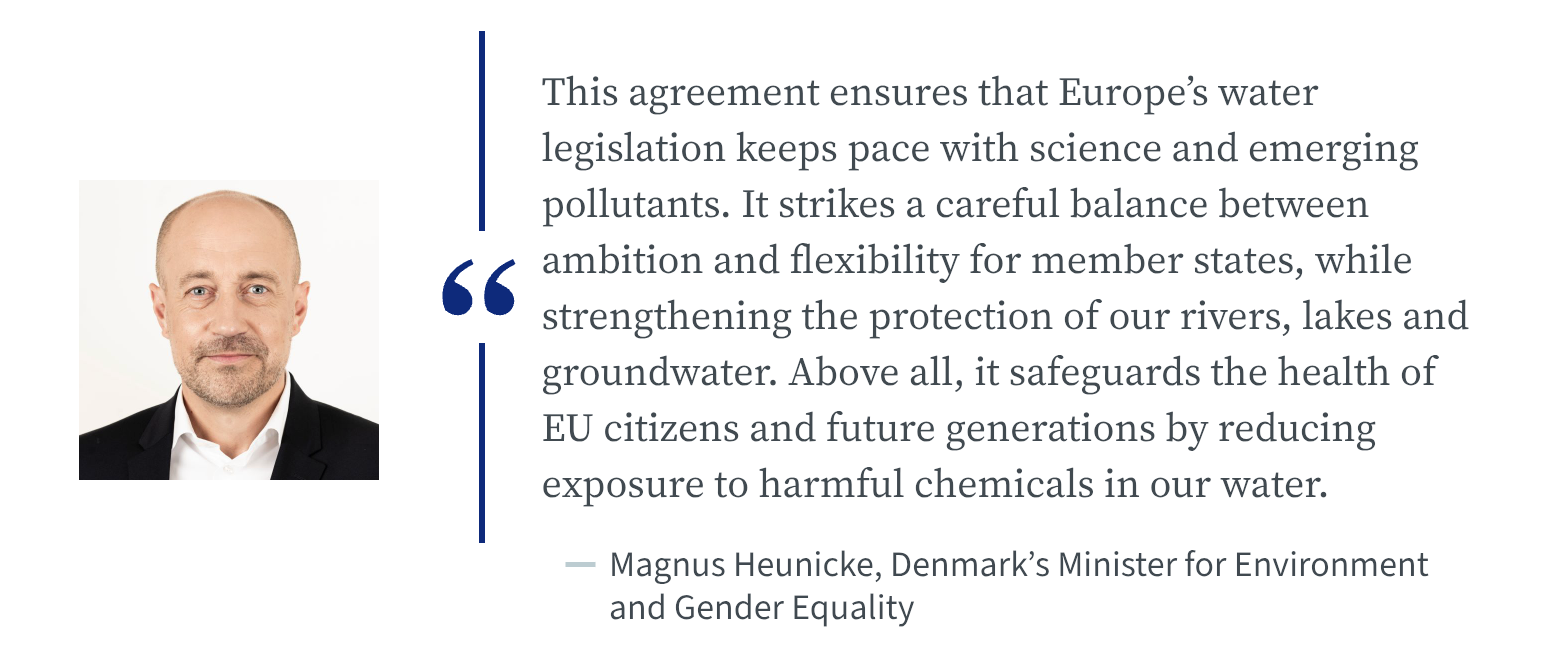The Council of the EU and the European Parliament have reached a provisional agreement to update the directive on pollutants in surface and groundwater. Based on the latest scientific evidence, this revision strengthens water quality standards across Europe and aims to better protect both human health and aquatic ecosystems.
New substances and stricter standards
The agreement updates the priority lists of pollutants by adding new substances such as certain pesticides, pharmaceuticals, bisphenols, and per- and polyfluoroalkyl substances (PFAS). Stricter thresholds are introduced, including a sum standard for pesticides in surface waters (0.2 µg/l). Bisphenol A is now designated as a priority hazardous substance, while outdated pollutants such as atrazine are removed.
Enhanced monitoring and transparency
Monitoring and reporting obligations are reinforced to improve data quality and comparability while avoiding excessive administrative burdens for Member States. Biological data will be reported every three years, while chemical data for surface and groundwater will be reported every two years. A key innovation is the introduction of Effect-Based Monitoring (EBM), which assesses the combined effects of pollutants on ecosystems rather than only measuring individual substances.
Prevention and compliance deadlines
The agreement clarifies the principle of “non-deterioration” of water bodies and introduces two narrowly defined exemptions, including temporary deterioration. Member States will have until 2039 to comply with the new standards, with the possibility of an extension until 2045 under strict conditions. For substances with more stringent environmental quality standards, the deadline is set for 2033.
Next steps
The provisional deal will now need to be formally adopted by the Council and the Parliament before entering into force. Member States will then have to transpose the directive into national law by December 2027.
This revision is part of the EU’s “Zero Pollution by 2050” ambition, responding to the fact that nearly half of Europe’s surface waters and a quarter of its groundwater still fail to reach good chemical status.

